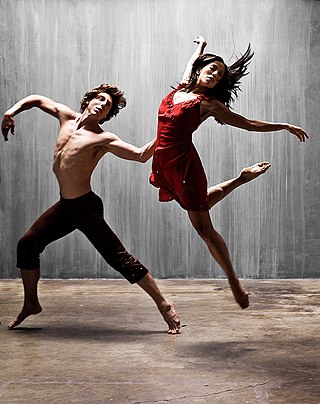
Dance is an art form consisting of sequences of body movements with aesthetic and often symbolic value, either improvised or purposefully selected. Dance can be categorized and described by its choreography, by its repertoire of movements, done simultaneously with music or with instruments; or by its historical period or place of origin.
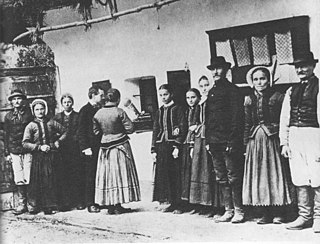
Folk music is a music genre that includes traditional folk music and the contemporary genre that evolved from the former during the 20th-century folk revival. Some types of folk music may be called world music. Traditional folk music has been defined in several ways: as music transmitted orally, music with unknown composers, music that is played on traditional instruments, music about cultural or national identity, music that changes between generations, music associated with a people's folklore, or music performed by custom over a long period of time. It has been contrasted with commercial and classical styles. The term originated in the 19th century, but folk music extends beyond that.
The music of Latin America refers to music originating from Latin America, namely the Romance-speaking regions of the Americas south of the United States. Latin American music also incorporates African music from enslaved African people who were transported from West and Central Africa to the Americas by European settlers, as well as music from the Indigenous peoples of the Americas. Due to its highly syncretic nature, Latin American music encompasses a wide variety of styles, including influential genres such as cumbia, bachata, bossa nova, merengue, rumba, salsa, samba, son, and tango. During the 20th century, many styles were influenced by the music of the United States giving rise to genres such as Latin pop, rock, jazz, hip hop, and reggaeton.

Salsa is a Latin dance, associated with the music genre of the same name, which was first popularized in the United States in the 1960s in New York City. Salsa is a mixture of Cuban dances, such as mambo, pachanga and rumba, as well as American dances such as swing and tap.
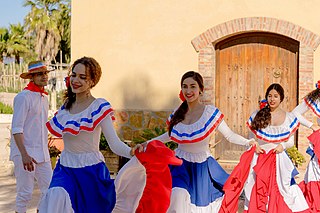
The music of the Dominican Republic is primarily influenced by Western European music, with Sub-Saharan African and native Taino influences. The Dominican Republic is mainly known for its merengue and bachata music, both of which are the most famous styles of music in the Dominican Republic, and have been exported and popularized around the world.

The Music of Puerto Rico has evolved as a heterogeneous and dynamic product of diverse cultural resources. The most conspicuous musical sources of Puerto Rico have primarily included European, Indigenous, and African influences, although many aspects of Puerto Rican music reflect origins elsewhere in the Caribbean. Puerto Rican music culture today comprises a wide and rich variety of genres, ranging from essentially native genres such as bomba, danza, and plena to more recent hybrid genres such as salsa, Latin trap and reggaeton. Broadly conceived, the realm of "Puerto Rican music" should naturally comprise the music culture of the millions of people of Puerto Rican descent who have lived in the United States, especially in New York City. Their music, from salsa to the boleros of Rafael Hernández, cannot be separated from the music culture of Puerto Rico itself.

Latin dance is a general label, and a term in partner dance competition jargon. It refers to types of ballroom dance and folk dance that mainly originated in Latin America.
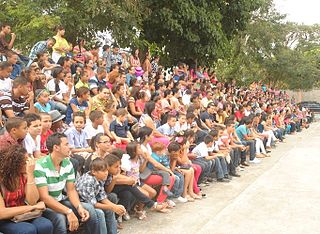
The culture of the Dominican Republic is a diverse mixture of different influences from around the world. The Dominican people and their customs have origins consisting predominantly in a European cultural basis, with native Taíno and African influences.
Boogaloo or bugalú is a genre of Latin music and dance which was popular in the United States in the 1960s. Boogaloo originated in New York City mainly among teenage African Americans and Latinos. The style was a fusion of popular African American rhythm and blues (R&B) and soul music with mambo and son montuno, with songs in both English and Spanish. The American Bandstand television program introduced the dance and the music to the mainstream American audience. Pete Rodríguez's "I Like It like That" was a famous boogaloo song.

The culture of Haiti is an eclectic mix of African, Taino and European elements due to the French colonization of Saint Domingue and its large and diverse enslaved African population, as is evidenced in the Haitian language, music, and religion.
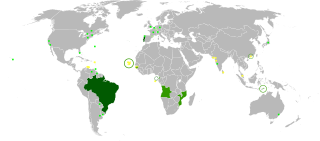
Lusophones are peoples that speak Portuguese as a native or as common second language and nations where Portuguese features prominently in society. Is a group of Portuguese-speaking nations that share cultural or historical ties with the Portugal, and which today maintain close political, diplomatic and military co-operation. Comprising an estimated 300 million people spread across 10 sovereign countries and territories, thus called Lusofonia or the Lusophone world, is the community of Portuguese-speaking (Lusophone) world; these include Angola, Brazil, Cape Verde, Galicia, Guinea Bissau, Equatorial Guinea, Macau, Mozambique, Portugal, São Tomé and Príncipe, East Timor, Uruguay, Cochin, Azores, Madeira, Goa, Daman and Diu, Singapore and Malacca to various degrees.

The culture of Indonesia has been shaped by long interaction between original indigenous customs and multiple foreign influences. Indonesia is centrally-located along ancient trading routes between the Far East, South Asia and the Middle East, resulting in many cultural practices being strongly influenced by a multitude of religions, including Buddhism, Christianity, Confucianism, Hinduism, and Islam, all strong in the major trading cities. The result is a complex cultural mixture, often different from the original indigenous cultures.
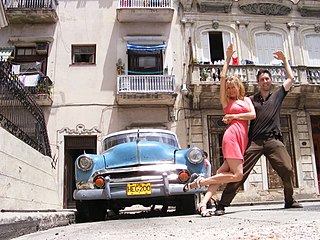
Timba is a Cuban genre of music based on Cuban son with salsa, American R&B/Funk and the strong influence of Afro-Cuban folkloric music. Timba rhythm sections differ from their salsa counterparts, because timba emphasizes the bass drum, which is not used in salsa bands. Timba and salsa use the same tempo range and they both use the standard conga marcha. Almost all timba bands have a trap drummer. Timbas also often break the basic tenets of arranging the music in-clave. Timba is considered to be a highly aggressive type of music, with rhythm and "swing" taking precedence over melody and lyricism. Associated with timba is a radically sexual and provocative dance style known as despelote. It is a dynamic evolution of salsa, full of improvisation and Afro Cuban heritage, based on son, Rumba and mambo, taking inspiration from Latin jazz, and is highly percussive with complex sections. Timba is more flexible and innovative than salsa, and includes a more diverse range of styles. Timba incorporates heavy percussion and rhythms which originally came from the barrios of Cuba.
Afro-Caribbean music is a broad term for music styles originating in the Caribbean from the African diaspora. These types of music usually have West African/Central African influence because of the presence and history of African people and their descendants living in the Caribbean, as a result of the trans-Atlantic slave trade. These distinctive musical art forms came about from the cultural mingling of African, Indigenous, and European inhabitants. Characteristically, Afro-Caribbean music incorporates components, instruments and influences from a variety of African cultures, as well as Indigenous and European cultures.

The culture of Papua New Guinea is many-sided and complex. It is estimated that more than 7000 different cultural groups exist in Papua New Guinea, and most groups have their own language. Because of this diversity, in which they take pride, many different styles of cultural expression have emerged; each group has created its own expressive forms in art, dance, weaponry, costumes, singing, music, architecture and much more. To unify the nation, the language Tok Pisin, once called Neo-Melanesian has evolved as the lingua franca — the medium through which diverse language groups are able to communicate with one another in Parliament, in the news media, and elsewhere. People typically live in villages or dispersed hamlets which rely on the subsistence farming of yams and taro. The principal livestock in traditional Papua New Guinea is the oceanic pig.

Stepping or step-dancing is a form of percussive dance in African-American culture. The participant's entire body is used as an instrument to produce complex rhythms and sounds through a mixture of footsteps, spoken word, and hand claps. Though stepping may be performed by an individual, it is generally performed by groups of three or more, often in arrangements that resemble military formations.

Africanisms refers to characteristics of African culture that can be traced through societal practices and institutions of the African diaspora. Throughout history, the dispersed descendants of Africans have retained many forms of their ancestral African culture. Also, common throughout history is the misunderstanding of these remittances and their meanings. The term usually refers to the cultural and linguistic practices of West and Central Africans who were transported to the Americas during the trans-Atlantic slave trade. Africanisms have influenced the cultures of diverse countries in North and South America and the Caribbean through language, music, dance, food, animal husbandry, medicine, and folklore.
Latin American culture is the formal or informal expression of the people of Latin America and includes both high culture and popular culture, as well as religion and other customary practices. These are generally of Western origin, but have various degrees of Native American, African and Asian influence.
Music of the African diaspora was mostly refined and developed during the period of slavery. Slaves did not have easy access to instruments, so vocal work took on new significance. Through chants and work songs people of African descent preserved elements of their African heritage while inventing new genres of music. The culmination of this great sublimation of musical energy into vocal work can be seen in genres as disparate as Gospel Music and Hip-Hop. The music of the African diaspora makes frequent use of ostinato, a motif or phrase which is persistently repeated at the same pitch. The repeating idea may be a rhythmic pattern, part of a tune, or a complete melody. The banjo is a direct descendant of the Akonting created by the Jola people, found in Senegal, Gambia and Guinea-Bissau in West Africa. Hence, the melodic traditions of the African diaspora are probably most alive in Blues and Jazz.















